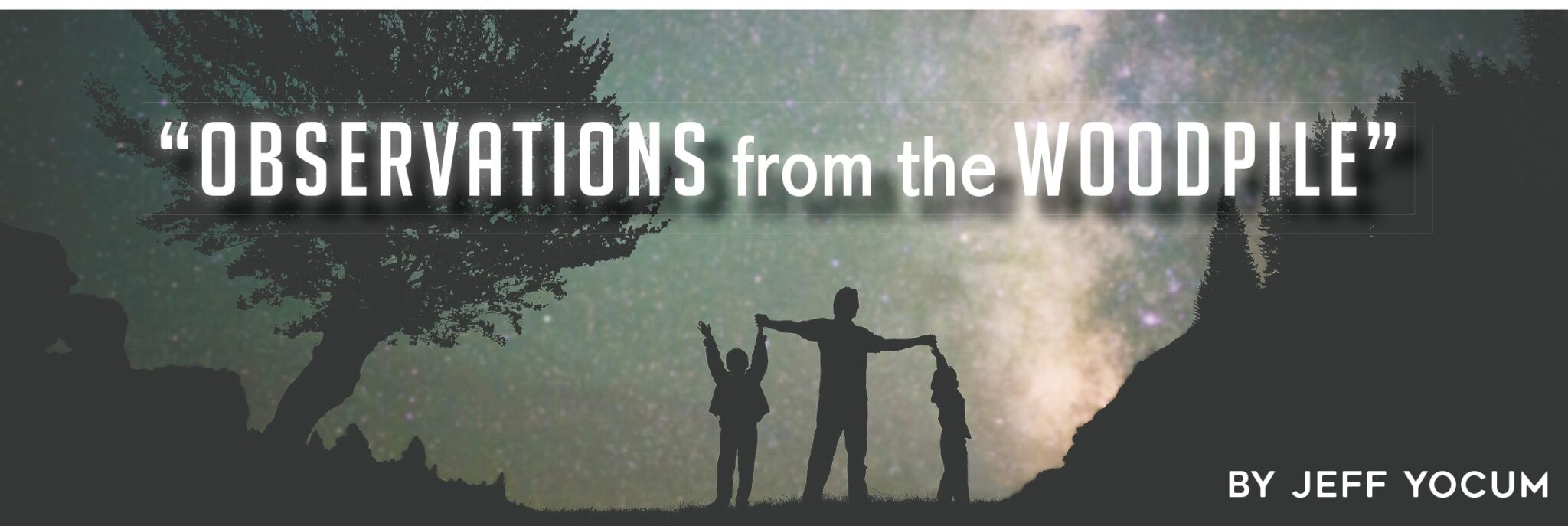
“Observations from the Woodpile”

Prologue
Observations from the Woodpile” is a collection of essays bundled together and given as a birthday present for my wife, Nancy, in 1997. Twenty-seven years have passed since the collection was given. The two main subjects of the essays, my sons Justus and Jacob, have grown into men with families of their own.
Throw Another Log on the Fire
Along about the middle of October every year, a cold front will move through our part of the country, bringing with it the first hint of the winter that follows. The temperature will swing 30 or 40 degrees on such days. One minute, the wind is still, the sky is cobalt blue, and sweat beads up on your hairline. Then, a little breeze kicks up and your body shudders with a chill as you’re suddenly transported into a December day. The whole day is spent ebbing and flowing between late summer and early winter with every cycle of the wind.
The evenings of these winter/summer days always bring about the request for the first fire. It’s not that it’s really that cold (by January, similar temperatures will feel like a heat wave, and I’ll be hollering at the kids to put their shoes on), but everyone likes that snug feeling. I resist as long as possible. Finally, if the flues have been cleaned, the mob wins and the wood burns.
I remind the kids that every stick of wood burned now is one that will need to be replaced later. This is a more potent warning as the winter drags on. By February, nearly all the logs have been cut, split, and stacked into a neat block of five cords in the shed. The weekly trips to the woodshed to replenish the woodbox have added about a thousand miles (in kid miles) to the wheelbarrow.
By February, there is also some linkage in the minds of everyone in the family to the amount of wood consumed and the amount of effort to produce it. There is a relationship between consumption and production. When all the wood in the house is used, there will be many trips to the woodbox on the porch. When the woodbox is empty, there will be several trips to the woodshed for split wood. When there is no split wood in the shed…well, you get the point. Ultimately, when none of these things are done, we turn on the electric heat, and everyone warms themselves by my tantrums.
This lesson of the linkage between what we consume and what we produce is much deeper than the measure of cordwood or calories or sweat. I want my kids to understand that the society, of which they are a part, necessitates a replenishment of what is consumed.
Success in relationships pivots on this point, too. If nothing is put back into a relationship, be it between friends or spouses or parents and children, eventually it is consumed. It has been my observations that this is particularly true of marriages. One spouse consumes more of the other than is replaced until there is either a catastrophic failure or a slow, creeping collapse.
When my kids are all howling about how cold it is and they want more heat out of the stoves, I’ll go on reminding them to conserve: to consume the resource slowly. There is more at stake than just firewood.
